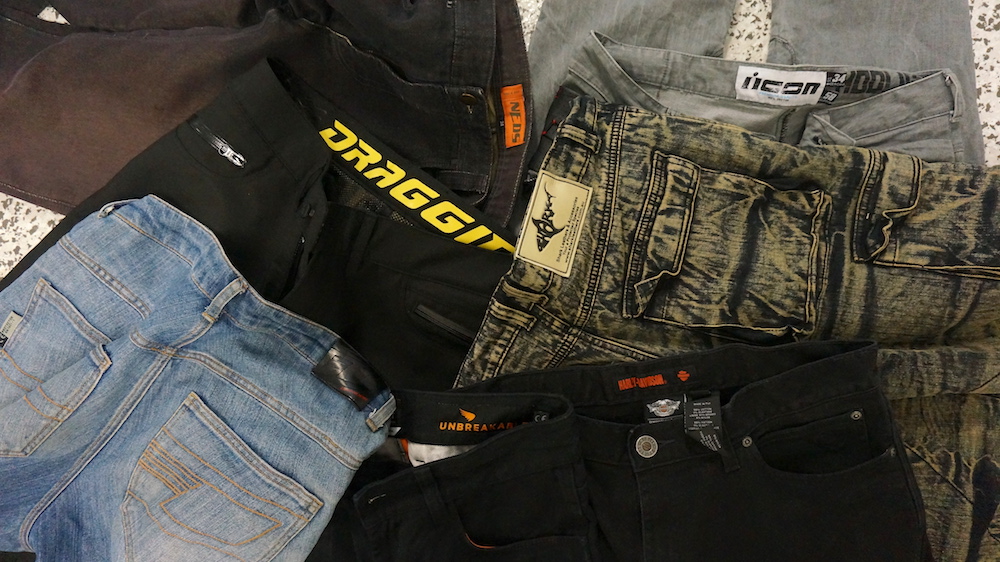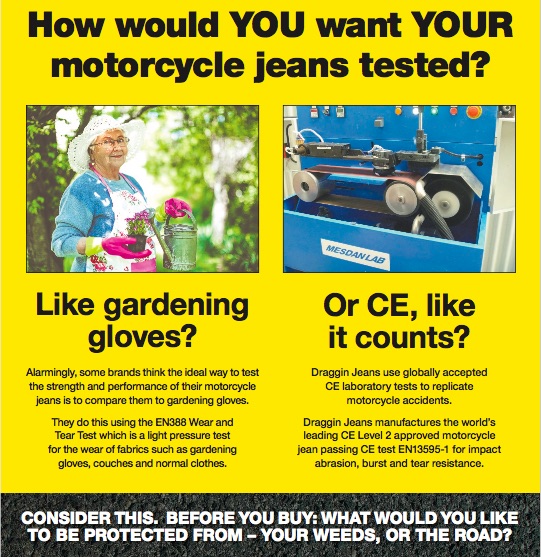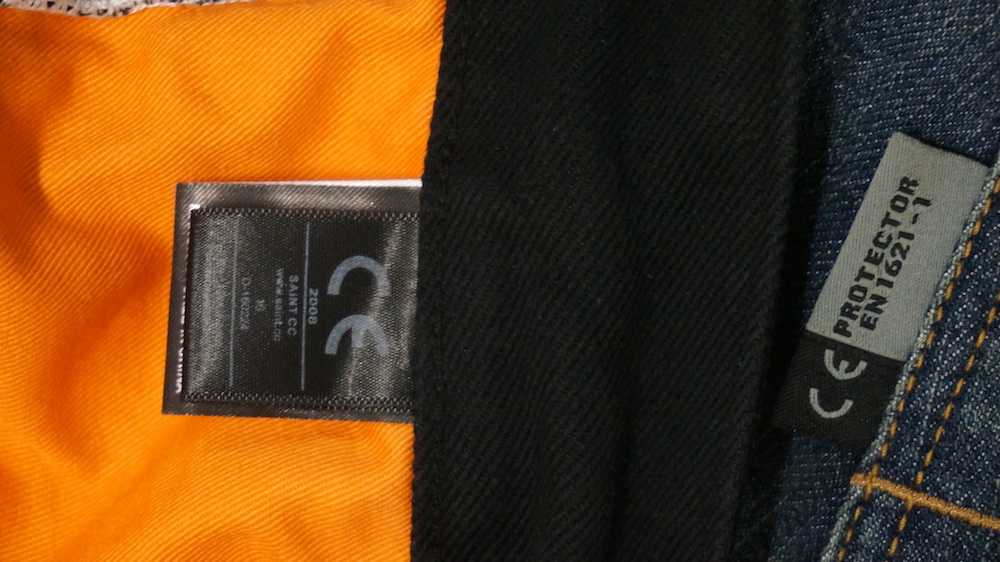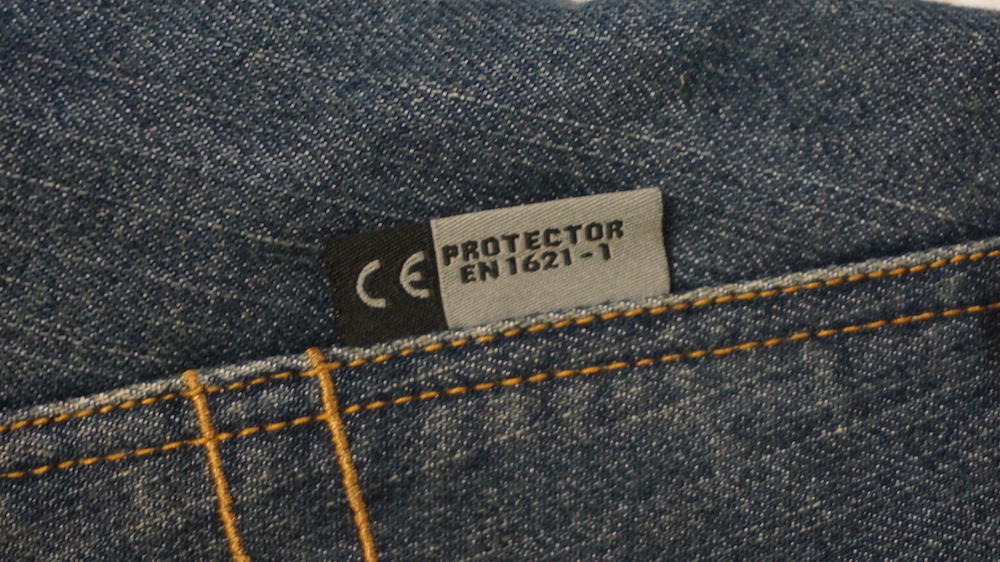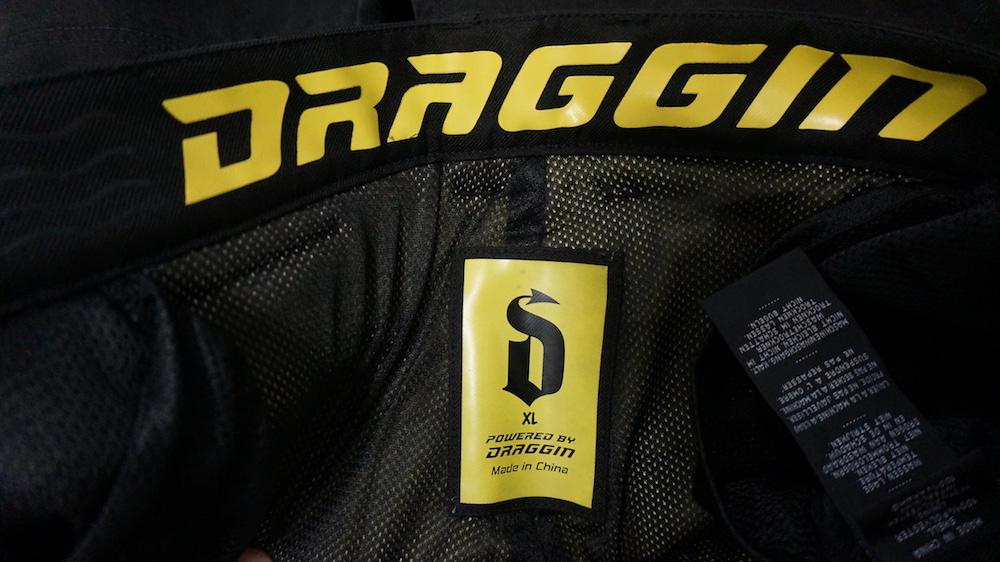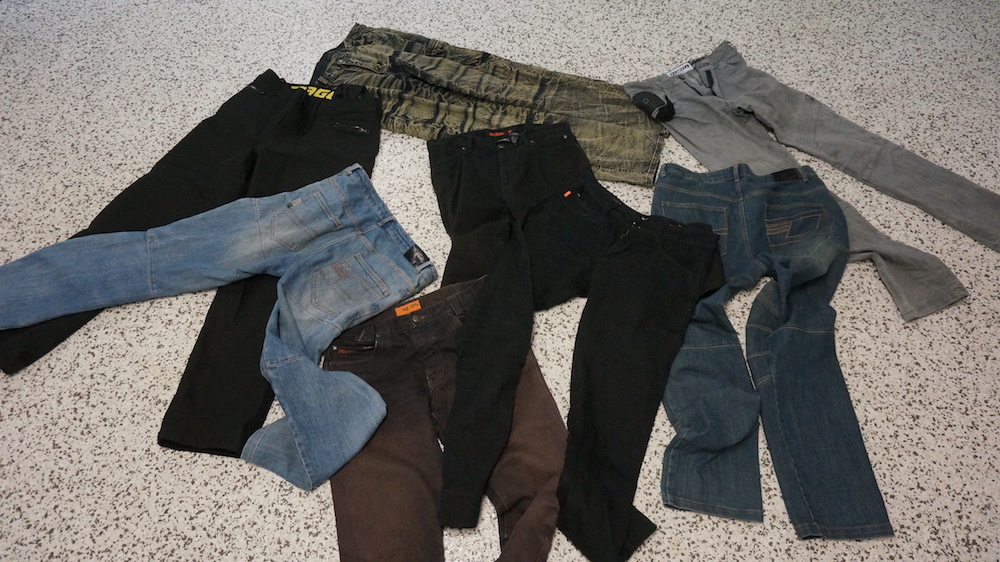A war of words has broken out between Australia motorcycle clothing companies Draggin Jeans and Saint over which motorcycle jeans offer the best protection.
A Draggin Jeans spokesman contacted us a coupe of weeks ago saying they would issue a press release debunking protection claims by Saint.
The promised release was delayed several times, but eventually has arrived as this magazine advertising campaign which doesn’t name Saint at all.
Claims and counterclaims
Draggin Jeans disputes Saint’s CE-approval and 5.9-second abrasion claim for their new single-layer Unbreakable 6 jeans.
They told us they would complain to the Australian Consumer and Competition Commission about the claims.
They say Saint’s testing was not done on the right equipment and have submitted their own sample to Deakin Uni, claiming the result was closer to 3.14 seconds.
Saint says their original single-layer denim was CE rated to 3.69 seconds.
Draggin says the CE approval quoted for that material is the same as protection approval standards for gardening gloves, not for motorcycle clothing.
But Saint says their new Unbreakable 6 is the first single-layer jean in the world that has an all-over CE EN13595 certified single-layer denim.
And in May, they will release the first single layer CE EN13595 certified single-layer stretch denim.
They say the material is tested by two different European protection standards agencies: Dolomiticert in Italy and Satra Technology Centre in the United Kingdom.
Draggin says that last year they conducted 149 impact abrasion tests at one lab on their gear as well as competitor brand jeans.
“We also conducted testing at four other test labs in Europe,” the spokesman says.
“No other brands do this. We do this testing so that we can be 100% confident of the performance of Draggin as well as comfortable with the numbers that we publish on competitor product.”
Stronger
Another claim Draggin questioned when they spoke to us is that Saint jeans are 200 times stronger than normal jeans. They say Saint should stipulate that they are talking about durability in normal wearing conditions compared with standard jeans, not under riding or crashing conditions.
Saint agrees the wording could be misconstrued, but says it is “semantics”.
Some readers have complained to us that their Draggin Jeans have a short life and fall apart quicker than standard jeans.
However, we have several pairs of Draggin Jeans and have not had that happen, despite being washed numerous times and ridden in harsh weather conditions.
Melting point
Draggin also claims Saint’s singe-layer denim material with a high blend of Dyneema (Ultra High Molecular Weight Polyethylene or UHMWP) has a low melting point and can melt on to your skin in a slide or even if your jeans touch an exhaust pipe.
However, the melting point of UHMWP is around 130°C, which seems pretty high to us. We have also tested this claim by pressing the material directly on to a hot exhaust pipe for several seconds and found no signs of melting.
However, I have burnt a hole in a pair of Draggin Hydro Roomoto pants.
Single layer Vs patch protection
The idea of a single-layer protective denim is certainly attractive.
Draggin has also been working on a single-layer denim, but says they are not yet happy with the results.
Instead, their jeans have patches of kevlar protection in the most vulnerable areas.
Critics claim this is not good enough because as you slide down the road, your loose pants may twist around and expose your skin through areas with no protection.
Conclusion?
The war of words does not clear up the issue for riders, but could just make us more confused.
And it may not be resolved until the independent rating system for motorcycle protective clothes being developed by Deakin University and the Neuroscience Research Australia is finished and accepted. There is no timeline for that, either.
Meanwhile, we will have to make our own choices based on the information provided on labels.
My cupboard is full of motorcycle jeans from Draggin, Saint, Neds, DriRider, Shark, Icon, Harley-Davidson and more. Some have CE labels, some don’t.
The labels are confusing, anyway, and often printed with such small type as to be impossible to read.
I haven’t crash-tested any of them for their protection values and I hope I never have to.
Like many riders, I take a calculated risk about riding pants.
Almost all protective riding jeans are too hot to wear about six months of the year in Queensland, so I usually choose to take my chances with a cool pair of normal jeans.
At least I am comfortable enough to concentrate on my riding and not distracted by thoughts of how I would prefer to just turn around and go home so I can cool off in the pool.


